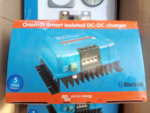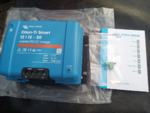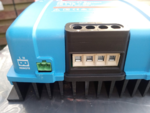wildebus
Full Member
- Messages
- 7,771
I don't think any B2B products have any kind of Alternator monitoring. They usually have internal temp monitoring of the unit to prevent charger overheating and some have battery temp monitoring for optimum voltage output.Yeah with little airflow in the engine bay I did wonder if heat would spell the end of that set-up eventually. Makes me wonder whether letting a powerful B2B charge flat house batteries at a standstill is a good idea too (that's the only reason I'd be interested in one i.e. fast charge without moving vehicle). I guess they have alternator/rectifier temperature monitoring?
You don't tend to see modern vehicles on the side of the road with steam coming out their bonnets any longer so I would imagine the B2B makers can fairly assume the vehicle designer has taken care of that side of the design and it is not a concern for them.
It is not that unusual for an alternator to fail once called on to charger an auxiliary battery though with the greater load as it may have been borderline but not obvious beforehand (happened to me a couple of times on T5s).









